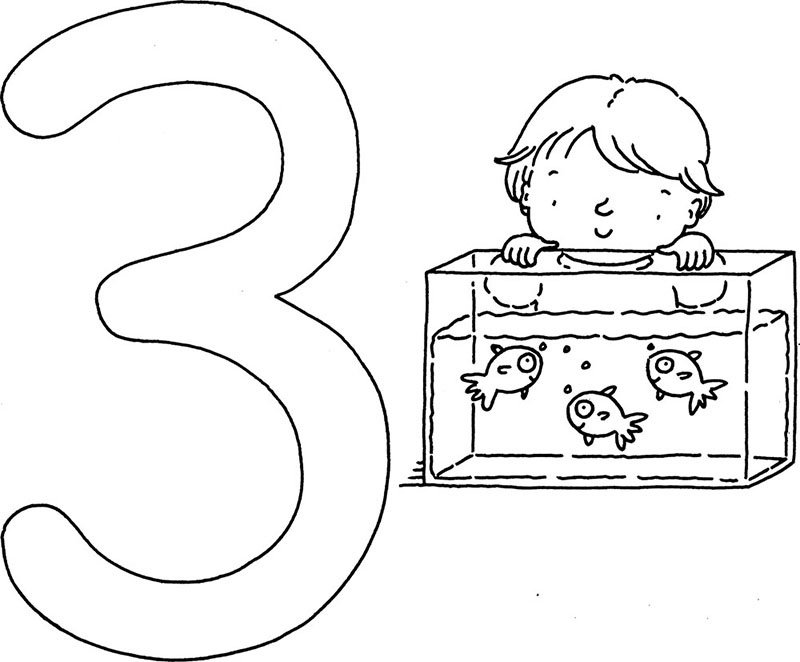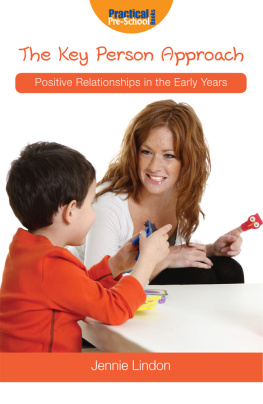Title page
WHAT DOES IT MEAN TO BE THREE?
A practical guide to child development in the Early Years Foundation Stage
Jennie Lindon
Copyright page
Published by Practical Pre-School Books,
A Division of MA Education Ltd,
St Judes Church, Dulwich Road,
Herne Hill, London, SE24 0PB
Tel. 020 7738 5454
2012 digital version by
Andrews UK Limited
www.andrewsuk.com
Revised edition MA Education Ltd 2008
First edition MA Education Ltd 2006
www.practicalpreschoolbooks.com
Front cover image iStockphoto.com/Olga Solovei
All rights reserved. No part of this publication may be reproduced, stored in a retrieval system, or transmitted by any means, electronic, mechanical, photocopied or otherwise, without the prior permission of the publisher.
Focus on three-year-olds
What Does it Mean to be Three? explores the developmental needs and likely skills of three-year-olds. This book is complete in itself but threes develop along their own personal timeline. So the content links closely with the other three titles in this series, especially with What does it mean to be two? and What does it mean to be four? The content of this book is relevant to any practitioner working with threes anywhere in the UK. The structure of the book, however, follows the framework for England of the Early Years Early Years Foundation Stage: guidance covering from birth to five years of age that will be statutory for early years provision from September 2008.
Each book in the What does it mean to be ...? series recognises that many children from the age group will attend different kinds of early years provision, as well as being part of their own family home. Even children, whose family have chosen childminding, may also increasingly spend part of their week in some kind of group setting. However, the objective is to approach young children as individuals who are two, three, four or five years of age and whose uniqueness should not be limited to their role in attending a given type of early years provision. Childrens learning can only be effectively and appropriately supported when adults - practitioners and parents alike - are guided by sound knowledge of child development: what children are like at different ages and what they therefore need in order to thrive.
The layout of each of the four books in this linked series includes:
- Descriptive developmental information within the main text, organised within the six areas of learning used by the Early Years Early Years Foundation Stage (England).
- For example sections giving instances of real children and real places, with occasional references to useful sources of further examples.
- Being a helpful adult boxes which focus on adult behaviour that is an effective support for childrens learning, as well as approaches that could be less wise or helpful.
- Food for thought headings which highlight points of good practice in ways that can encourage reflection and discussion among practitioners, as well as sharing in partnership with parents.

Where are the threes officially?
Three-year-olds are welcome in any of the different types of early years provision: nursery schools and classes, playgroups and pre-schools, day nurseries, different types of centres for young children and with the childminding service. Families are encouraged to accept some kind of out-of-home early years experience for their three-year-olds, but across the UK attendance is definitely voluntary. A different national framework operates in each country of the UK:
- In England from September 2008 the three to five Foundation Stage early years curriculum, will be replaced by the birth to five years framework of the Early Years Foundation Stage.
- In Scotland, the Curriculum Framework for Children 3-5 applies to the experiences of threes. Current developments focus on a Curriculum for Excellence to cover from three to eighteen years of age. In the earlier years, the main focus for development is for a continuity of more active learning and play from the early education of three to five years olds into the first years of primary school.
- In Wales, the main focus of development is on the Foundation Phase for young children from three to seven years, bridging the early years curriculum into the first years of primary school.
- In Northern Ireland the Curricular Guidance for Pre-School Education applies to three- and four-year-olds, often mainly threes. Young children start primary school in the September of the school year after their fourth birthday. The main focus for current development is the Early Years Foundation Stage that applies to the first two years of primary school, with children aged four or five years of age.

Development matters in the Early Years Foundation Stage (EYFS)
From September 2008 in England threes are officially within a framework that spans the full range of early childhood. All early years practitioners in England need to become familiar with the details of the EYFS but the good practice described is not new. Part of your task, in finding your way around the EYFS materials, is to recognise just how much is familiar, when your early years provision already has good practice. (See Further Resources for information on how to access materials about the EYFS.) The EYFS follows the developmental areas pattern, established with the Foundation Stage, and there are only a few changes within the details of that structure.
There are six areas of learning within the EYFS.
- Personal, social and emotional development
- Communication, language and literacy
- Problem solving, reasoning and numeracy
- Knowledge and understanding of the world
- Physical development
- Creative development
This framework is one way of considering the breadth of childrens learning. But of course children do not learn in separate compartments; the whole point is that childrens learning crosses all the boundaries. The aim of identifying areas of learning is to help adults to create a balance, to address all the different, equally important areas of what children gain across the years of early childhood.
When the EYFS is in place, all these records have to connect with the six areas of learning. A rich resource of developmental information and practice advice is provided in the Practice Guidance booklet of the EYFS, in Appendix 2 that runs from pages 22-114. None of this material should be used as a checklist, or have-to-do grids. It is crucial that early years practitioners and teams hold tight to this key point. In each of these very full pages, the same pattern applies.
- The developmental information in the first column, Development matters, is a reminder of the kinds of changes likely to happen - not an exhaustive list of what happens, and in this exact way. The examples work like the Stepping Stones guidance of the Foundation Stage.
- The broad and overlapping age spans are deliberate: birth to 11 months, 8-20 months, 16-26 months, 22-36 months, 30-50 months and 40-60+ months. The aim is to refresh about development, supporting practitioners to take time over all the steps. There should be no headlong rush to the older age spans, let alone the final early learning goals (ELGs). None of the descriptions, apart from the ELGs, are required targets or outcomes.
- So, the only part of all this information that is statutory is the description of the early learning goals. They only become relevant for observation within the last year of the EYFS (just like with the Foundation Stage), which is the reception class located in primary schools.
Next page




